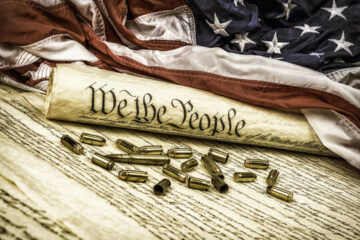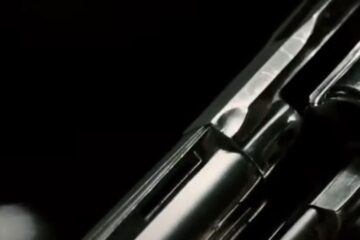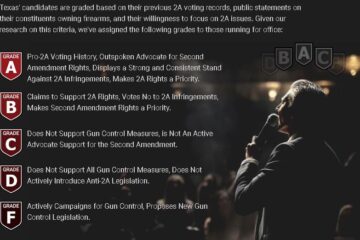Handguns: Are You Using or Abusing Your Guns?
Article first appeared at Cheaper Than Dirt.
Recently, one of the teenaged grandkids made the often repeated comment, ‘You only live once. (YOLO)’ I squashed this thought with both feet. True enough, we are promised but one life, but I pointed out that life isn’t short, it is long. Things you do in your youth may have consequences for the rest of your life. So, it is with firearms and the way you treat them. If you use a quality firearm and take good care of it, the piece will last almost indefinitely. Abuse it, and a few years at best are all you will get out of it. As a writer and experimenter, I test firearms. Many are interesting, a few are disappointing, and a very few completely arrest my attention. Some of my personal firearms would be difficult to replace. As an example, the Smith and Wesson 19-4 represents a high point in American revolver manufacture. The same goes for the Heckler and Koch P7M8 in 9mm handguns.

- Activate Your Own Stem Cells & Reverse The Aging Process - Choose "Select & Save" OR Join, Brand Partner & Select Silver To Get Wholesale Prices
- Get your Vitamin B17 & Get 10% Off With Promo Code TIM
- How To Protect Yourself From 5G, EMF & RF Radiation
- Protect Your Income & Retirement Assets With Gold & Silver
- Grab This Bucket Of Heirloom Seeds & Get Free Shipping With Promo Code TIM
- Here’s A Way You Can Stockpile Food For The Future
- Stockpile Your Ammo & Save $15 On Your First Order
- Preparing Also Means Detoxifying – Here’s One Simple Way To Detoxify
The author keeps on hand both 16- and 18-pound recoil springs for the 1911. Their use depends upon the handgun and task.
I do not own a safe queen. The safe is temporary storage. The true nature of a Combat Magnum is on the range, in the field or on the hip, not in the safe. While my primary focus is handguns, I also own a number of good rifles. There is nothing quite like the Savage Model 20 lightweight hunting rifle. This 1922 production date .300 Savage rifle would demand big bucks and a long search to replace. I am letting my grandchildren worry about that. I will hunt with it as long as I am able.
These firearms have lasted not because I have babied them but because I have maintained them. (Often the previous owner maintained the piece, but choosing a well maintained used gun is a subject for another time.) The proper maintenance, lubrication, and periodic replacement of high wear parts have resulted in longevity and excellent service. My program is the result of study, observation, practical experience, and bending the ear of experienced gunsmiths. I have learned not only proper procedure and maintenance, but which parts should be kept on hand for future repair.
Wear Isn’t a Bad Thing
Wear isn’t something to be avoided. All machines exhibit wear as they are used—as they run we might say. Pistol magazines in particular must be considered a renewable resource. What must be avoided is eccentric wear. We must be aware of changes in the pistol’s finish and use preservative oils more aggressively. We must be aware of changes in the firearm’s slide velocity.

The extractor and breech face never receive the attention they should. Check for material under the extractor and inside the firing pin channel.
As a recoil spring becomes weaker, slide velocity increases and battering results. Peening of parts may occur. The tell tale first sign of a weak spring is the inability to feed the last round in the magazine. The slide lock may also begin to lock up at the wrong angle on the magazine follower, which may damage the slide stop and the follower.
A Happy Gun
Few shooters understand how important cleaning is. The useful life and reliability of the handgun depend upon constant cleaning and maintenance. I have observed handguns with carbonized deposits under the extractor and brass particles under the extractor. In one incident a student in one of my classes suffered a locked up action in his DAO .380 pistol. After I completely disassembled the handgun, it was discovered that a small hard object—perhaps a chip off of a breath mint—had lodged in the action.
Carrying a handgun without a holster in the pocket is non professional. A cleaning got this handgun back on track. Despite this experience, I believe that self-loaders are more likely to function with foreign material intrusion than revolvers. The individual chambers must be kept clean and particular attention paid to the chambering step.
The majority of cracked forcing cones and blowups in magnum revolvers are a result of lead build up in the forcing cone. The use of soft .38 caliber projectiles for handloading, and then firing hundreds in practice, followed by a poorly motivated cleaning results in skyrocketing pressure when the next magnum is fired.

Old cop guns worn at the point of the hip in open holsters picked up dings like this. Do not add to the damage; keep the bare metal oiled and replace the grips.
When cleaning the firearm, you must be comfortable with the field strip. The Beretta 92 is among the simplest handguns to maintain. A 1911 with a full length guide rod is one of the more complicated.
The firearm should be cleaned and inspected. I have already mentioned debris under the extractor. When a recoil spring has lost an inch of its free length, it should be replaced. Magazine springs are more difficult to gauge, but the difference in strength between a well worn or a new magazine spring is noticeable. Recoil springs on average have a useful life of 5,000 rounds. The new Glock seems good for longer use. The heavy momentum10mm and .357 SIG pistols will not last as long. The firing pin spring should be replaced periodically as well. The revolver may occasionally need a trigger return spring.
Lubrication
A firearm must be lubricated to prevent wear and allow normal function. A firearm to be fired extensively on the range should be heavily lubricated. Lubrication will blow off during firing. A firearm that is carried for personal defense needs little lubrication. It will not be fired more than a magazine load during a critical incident.

The CZ 85 is a versatile and worthwhile 9mm. This is possibly the only example the author will ever need with past experience as a guide.
However, something many shooters miss is that the personal defense handgun should be cleaned and lubricated on a regular basis even if it isn’t fired. Dust, lint, and debris are accumulated, and so are salts from the body that may cause corrosion. Lubrication runs off of the firearm. Some handguns are more desirous of lubrication than others.
Spare Parts
If you have suffered a breakage of a small part and seen the all too frequent OUT OF STOCK symbol, it isn’t something you soon forget. I do not keep a spare set of tires for the truck in the barn because there are a half-dozen tire stores in my home town. I have on hand tools for normal maintenance of both the truck and the Colt.
For parts that may take a few days to get, I order a few parts ahead. This means a set of grips and grip screw bushings for the Colt and the Beretta, an extractor for the Colt, spare magazines for each handgun, and items particular to the individual firearm. The 1911 should have a spare recoil spring guide on hand. They do not break, but 1911 users lose them on a regular basis. A spare link isn’t out of the question. You must understand how to fit the link and the extractor as well.

An interesting combination—the extractor is a high wear part. The recoil spring plug is a high loss part.
You may pre fit the extractor—assuming you own but one 1911. The Beretta should have a spare locking block (wedge) on hand. A CZ 75 used in competition may need the extractor replaced every 8,000 rounds. Smith and Wesson revolvers sometimes need a trigger return spring. The Glock also sometimes breaks trigger return springs. Older generation Glocks sometimes lose the front sight. If you have not yet replaced the original sights with iron sights, now is a good time.
Spare magazines should be on hand. Three magazines is a realistic minimum, with one in the gun, one on the belt, and one resting. Five or more is better. They should be marked 1, 2, 3, and so on in order to limit confusion in the case of a malfunction. The cost of training, ammunition, and safe keeping is more than the amount of the initial purchase.
Purchasing a first quality handgun will be money well spent. Think hard before purchasing an older handgun for personal defense. The gun butcher is busy, and I have seen Smith and Wesson revolvers—as well as Colts—that appeared to be in good condition, but would not fire because of poorly conceived action work. 1911 handguns with poor aftermarket parts and fitting are the worst offenders.
On occasion, I have seen police trade in handguns in deplorable shape. One was a SIG that was corroded. Another was a Beretta Vertec with the firing pin channel enlarged, resulting in primer flow back. I appreciate older models, but it is best to start the journey with a new handgun. Some of the older handguns present a difficulty in obtaining spare parts. If you do not have the barrel nut tightening tool with the Dan Wesson revolver, you cannot tighten the barrel against inevitable loosening. Without the HK P7M8 striker removal tool, you cannot maintain the handgun.
An old adage is, ‘buy cheap buy twice.’ The same goes for maintenance, do not be penny wise and dollar dumb. The best firearms ever made are available today. By following a regular maintenance schedule and performing a regular replacement of high wear parts, these firearms will render good service practically indefinitely.
Bob Campbell is a former peace officer and published author with over 40 years combined shooting and police and security experience. Bob holds a degree in Criminal Justice. Bob is the author of the books, The Handgun in Personal Defense, Holsters for Combat and Concealed Carry, The 1911 Automatic Pistol, The Gun Digest Book of Personal Protection and Home Defense, The Shooter’s Guide to the 1911, The Hunter and the Hunted, and The Complete Illustrated Manual of Handgun Skills. His latest book is Dealing with the Great Ammo Shortage. He is also a regular contributor to Gun Tests, American Gunsmith, Small Arms Review, Gun Digest, Concealed Carry Magazine, Knife World, Women and Guns, Handloader and other publications. Bob is well-known for his firearm testing.
















